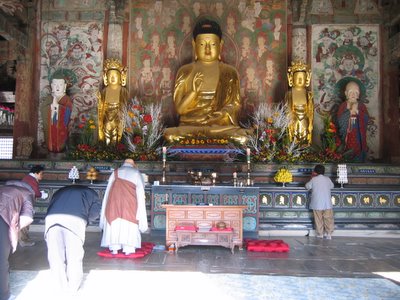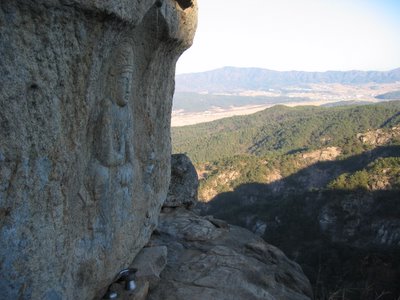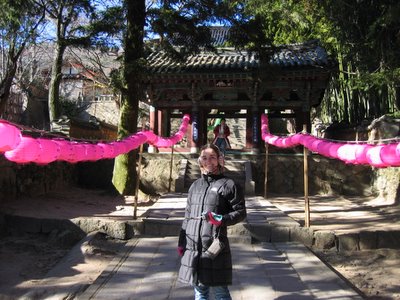Gyeongju was the capital of the Shilla Dynasty--the largest of Korea's three main dynastic precursors--from 57 BC, and became the capital of the entire peninsula when the Shilla ruler conquered neighboring Gogureyo and Baekje at the end of the 7th century. When the dynasty expanded at the end of the first millenium, the capital was moved northwards to Seoul. Due to the city's second millenium obscurity, it is incredibly well preserved. Much restoration work was undertaken in the 70s under the aegis of US-backed dictator
Park Chung-hee.
Early 6th century Buddhist temple and World Heritage site Bulguksa:





Yet another World Heritage site. The mountaintop grotto at Seokguram housing a massive stone buddha. Unfortunately, pictures inside were prohibited:




Cheomseongdae, the oldest known observatory in East Asia, dating from the first third of the 7th century:

Inside the dozens of grass-covered tumuli through southern Gyeongju lie the bodies of the Silla royal family, dating back to the 5th century. A number of them have been excavated, yielding numerous artworks and treasures. These tumuli were left fully intact in the center of downtown, and it was really quite incredible to behold 25 meter high burial mounds right in the center of a city.


On Namsan mountain in southern Gyeongju--a World Heritage site, of course--UNESCO has recorded 122 temples, 64 stone pagodas, 57 stone buddhas, tumuli, palaces, ruins, and who knows what else. Leah and I hiked for about 7 hours in the Siberian winds around the peak, and it was well worth it:






Sixth century Buddhist temple Girimsa, a fourteen building complex on the outskirts of Gyeongju:


Another sixth century Buddhist temple: Gulgolsa. This one features a massive stone buddha carved into the cliffside in the early sixth century:



The Sea Tomb of King Munmu, a seventh century Silla king who willed his burial underwater just off the coast. The idea was that if he were interned in the ocean, he would be reincarnated as a dragon and return to Silla to fend off Japanese colonists. Allegedly, this is the only underwater tomb in the world.


The ruins of the seventh century temple Kamunsa. It was constructed by King Munmu as a resting place for him when he planned to return as a dragon. He died before it was completed, and his son finished the deed.

Kimchi for sale at a market:




















































